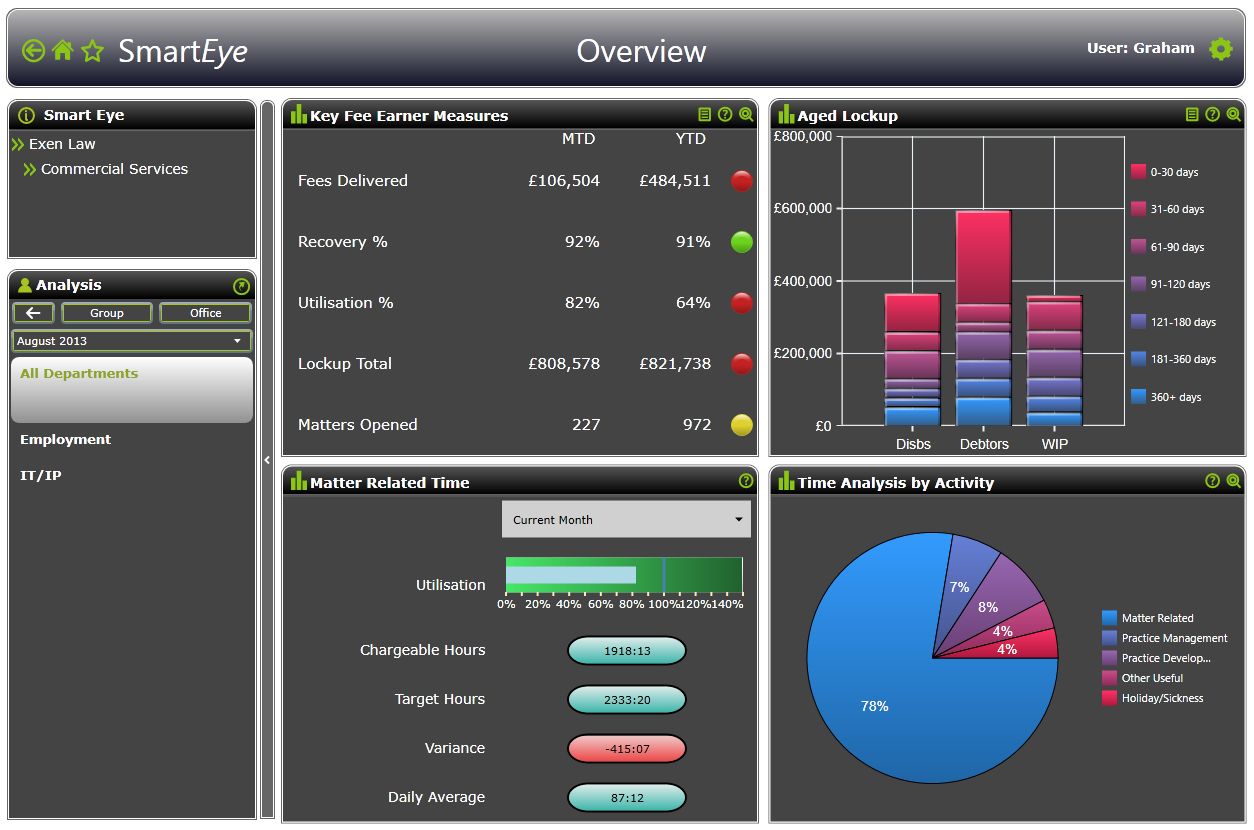
The excellent book ‘How Google Works’ by Google Executive Chairman and former CEO Eric Schmidt reveals that the internet search giant set out three goals for its search engine in the early days. These were:
- Speed
- Accuracy
- Ease of Use
While reading this book, it occurred to me that these same three pillars equally apply to great management information.
In this blog post I’ll explore how these three pillars of good management information relate to law firms, and what this means for your management information system.
(1) Speed
Now when I talk about speed here, I am referring to ‘appropriate speed’. Flying an aeroplane needs instant, real time information. Running a law firm generally doesn’t. However, law firm management information provided once per month, several days (or weeks) after the end of a financial period is certainly not fast enough. Relevant information should be accessible when it is most useful and in a time frame that allows issue identification and response to happen quickly and effectively.
(2) Accuracy
The importance of accuracy is obvious. But again, it has to be appropriate accuracy. Calculating monthly profits to the nearest 1p might be accurate, but is not at all useful. Accuracy breeds confidence, and confidence in management information is absolutely vital. Be clear about your parameters and range of acceptable accuracy.
(3) Ease of use
Most management information fails on this score for a number of reasons. These include:
a. Readability – I explored some of the issues around the presentation of law firm management information in my recent post, Lawyers: good with words, not so good with numbers?
Most financial information is presented as rows and columns of numbers. This is difficult to read and makes it virtually impossible to decipher trends and exceptions. Yet it is the trends and exceptions that are the true information from a set of data. Read an explanation of the difference between data and information here.
If your management information is presented in a way that is not clearly understandable, then don’t expect your fee earners to be able to act upon it.
b. Accessibility – Most law firm management information is still presented on paper. Paper gets lost, needs filing, and takes time and money to produce. How many weighty reports does your management team produce that end up as bookends on partners’ desks?
Easily accessible information in the 21st century is online: that’s where we go for all our other information (the news, weather, train times etc), so why not management information?
c. Analysis – The ability to drill down from summary to detail (eg to analyse by departments, teams, work types, client sectors etc) is another key element of a good law firm management information system.
One of the most common problems with law firm information systems is that they are not only difficult to access, they are often impossible to use without employing a computer programmer.
These recent articles explain why most law firm practice management systems set law firms up to fail and how to build an effective management information system for law firms.

The success of the Google approach is clear to see. By placing customer (Google search user) needs above all else, Eric Schmidt led the company from a Silicon Valley start-up to a global technology leader that today has over $55 billion in annual revenues and offices in more than 40 countries.
The authors of How Google works highlight “how technology has shifted the balance of power from companies to consumers” and say that “the only way to succeed in this ever-changing landscape is to create superior products.”
In order to create superior products, it is vital to listen to clients and understand their needs. This market-driven approach to legal services is a relatively new concept in our industry. Traditional law firm practice models still dominate, but their dominance is waning – a cultural shift that is explored by well-known legal sector consultant, Chris Bull, in his Legal IT Today article, Ten key trends that are transforming law firm business models in the digital age.
To survive and succeed in today’s tough legal sector market, law firms must seek operational efficiencies, closely monitor all their processes, projects and transactions, and act quickly to address any issues – as well as deliver services that clients want and are willing to pay for. All of this relies on an effective management information system.
What do you think are the most important aspects of law firm information management? How has your firm adapted to the changing legal sector market? What does your MIS deliver well on?
Please tweet your thoughts to me at @KatchrData
To discuss improvements to your law firm management information system, contact us by email or call 03333 010 766
Blog post by Graham Moore, Managing Director, Katchr.





